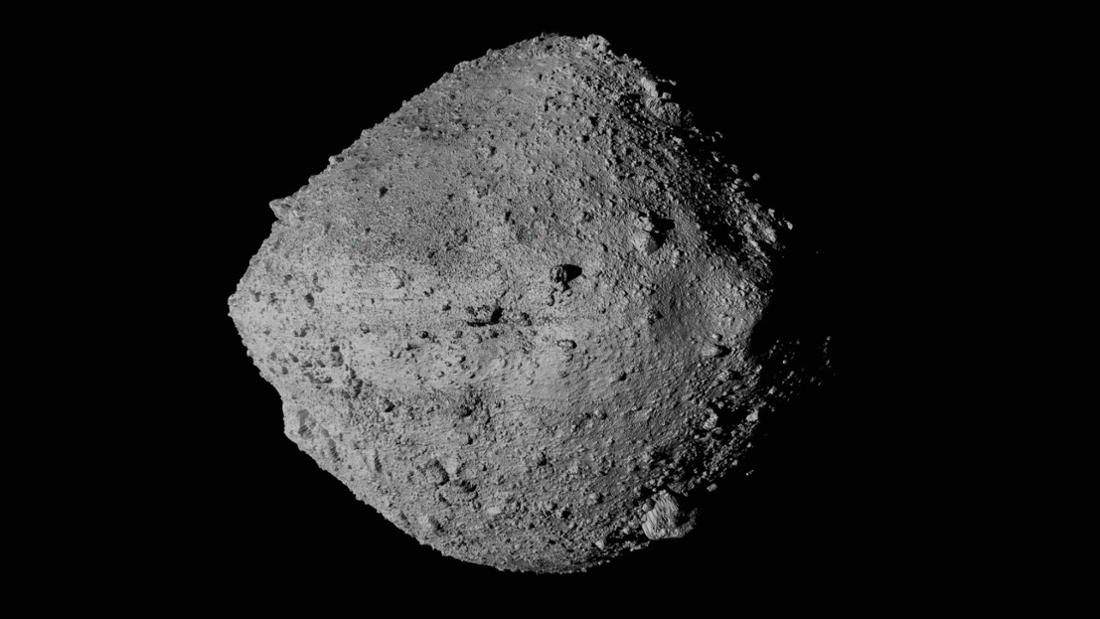The removal of the sample from the asteroid Bennu was spectacular, then it was brought back to Earth in a similarly spectacular way – and is now being examined. Initial findings inspire researchers.
Houston – A sample of rubble from the asteroid Bennu that was dropped to Earth around three weeks ago contains traces of water and carbon, according to the US space agency NASA.
This was shown by initial examinations of the sample, which would have to be deepened with many further analyses, NASA announced on Wednesday at a press conference, at which photos and videos of the sample were shown for the first time. It is the first sample of an asteroid successfully brought to Earth in the history of the US space agency – and the largest such sample ever taken.
“Research like we’ve never seen before”
NASA boss Bill Nelson spoke of a “picture-book mission”. The sample will help scientists worldwide investigate the origins of life and our planet. “There’s going to be so much more research on this – research like we’ve never seen before,” Nelson said. And NASA manager Makenzie Lystrup promised: “In the next few months and years we will definitely be rewriting history a little bit.”
The sample was dropped in a capsule in September by the NASA probe “Osiris-Rex” from an altitude of around 102,000 kilometers – and then landed in the desert of the US state of Utah, protected by a heat shield and slowed down by parachutes. From there it was then taken to NASA laboratories in the US state of Texas – where around 200 scientists are now working on the material using 60 different examination methods.
The material will now be cataloged and then made available to researchers and museums around the world. Around three years ago, “Osiris-Rex” collected the sample from the celestial body using a complicated maneuver.
The sample consists of dust and pieces of rubble of various sizes and weighs a total of around 250 grams, about as much as a packet of butter, NASA said. NASA had hoped for at least 60 grams in advance. Contrary to expectations, the NASA scientists also found additional material from the asteroid Bennu on and on the capsule, which is why the investigation initially took longer than planned.
NASA counts Bennu as one of the most dangerous asteroids
“Osiris Rex” was launched from the Cape Canaveral spaceport in September 2016 and arrived at Bennu around two years later. The deep black asteroid, named after an ancient Egyptian deity, has a diameter of around 550 meters and could come quite close to Earth in a good 150 years.
Even if the risk of impact is very low, NASA counts Bennu as one of the most dangerous asteroids currently known – and therefore wants to research it in detail. The scientists also hope that the “Osiris-Rex” mission, which costs around one billion dollars, will provide insights into the formation of the solar system more than 4.5 billion years ago, because such asteroids are remnants of it.

In 2005, the Japanese space probe “Hayabusa” landed on an asteroid. In 2010, it brought the first soil samples ever collected from such a celestial body to Earth. There have been other flights to asteroids, but before “Osiris-Rex,” no other probe has brought material back to Earth.
Meanwhile, NASA continues to focus heavily on asteroids: The “Osiris-Rex” probe, which is approximately six meters long and weighs 2,100 kilograms, set off for the next asteroid, Apophis, immediately after it was dropped. According to calculations, the asteroid with a diameter of around 370 meters will fly past Earth at a distance of around 32,000 kilometers in 2029 and could therefore be studied up close for the first time. The NASA “Psyche” mission to the asteroid of the same name is also scheduled to start this week. dpa

